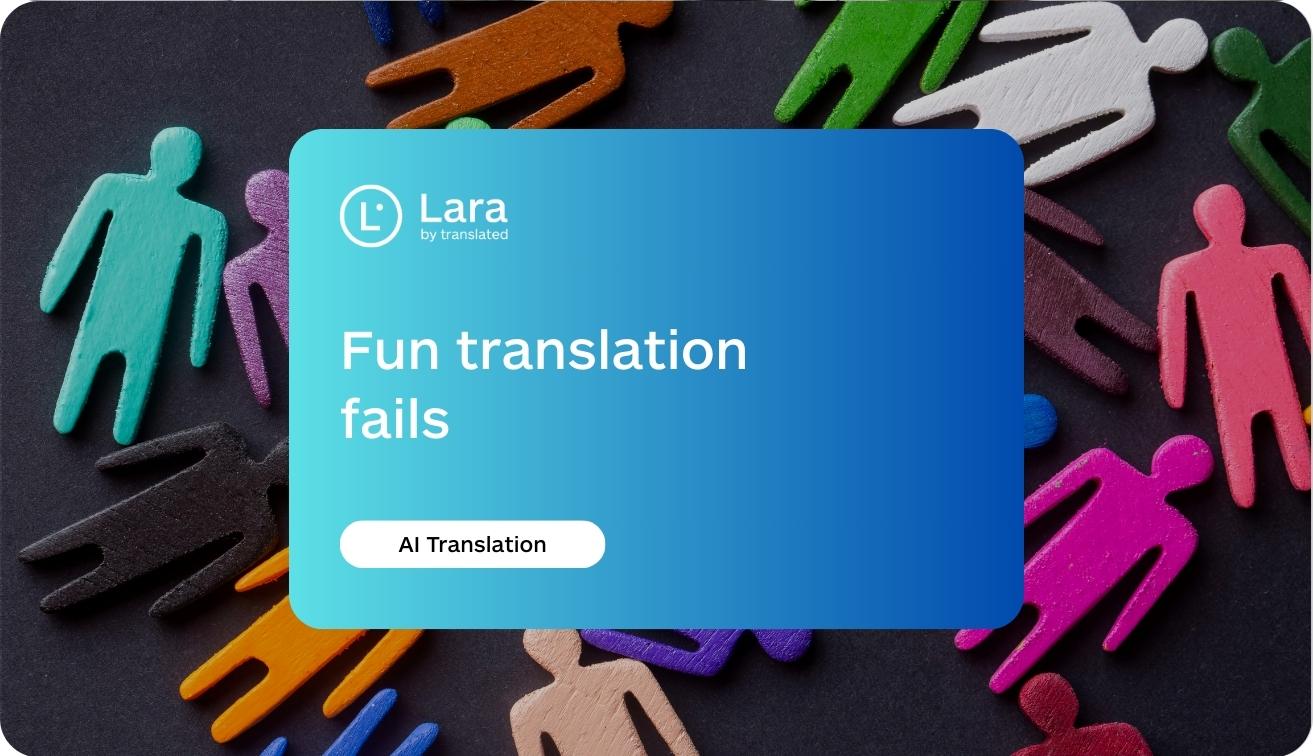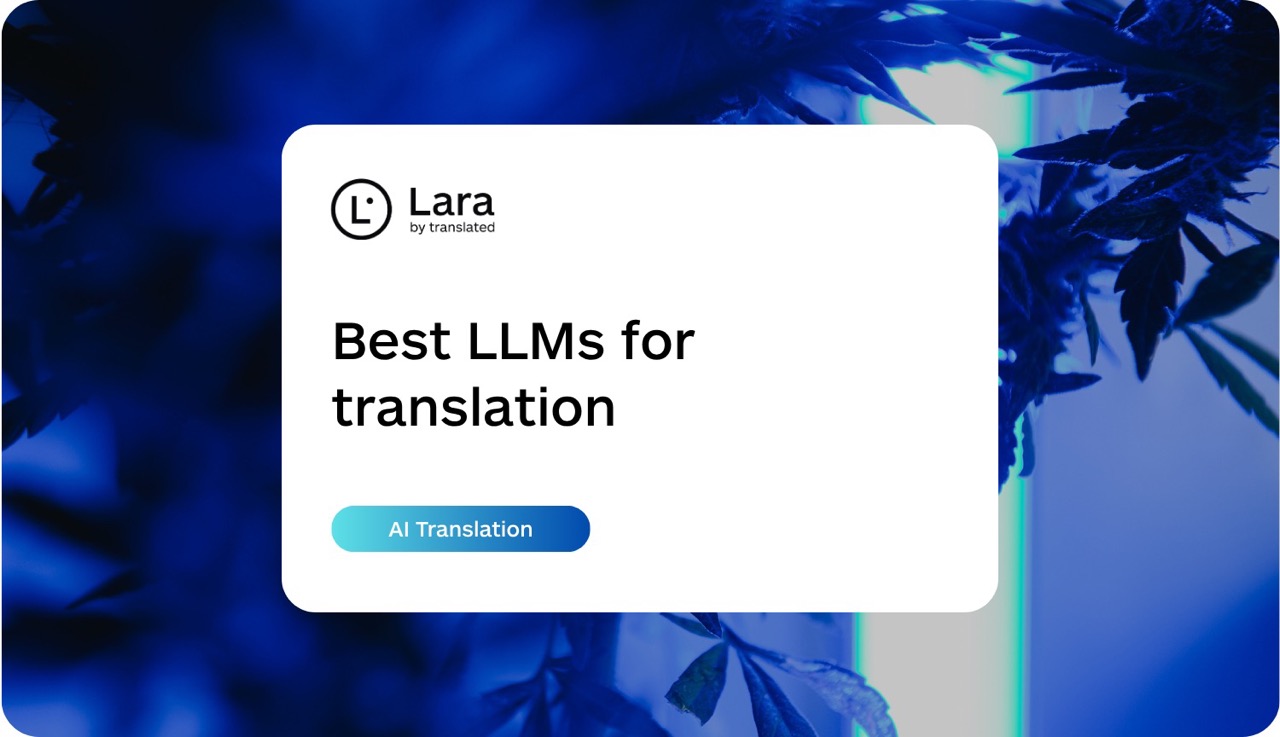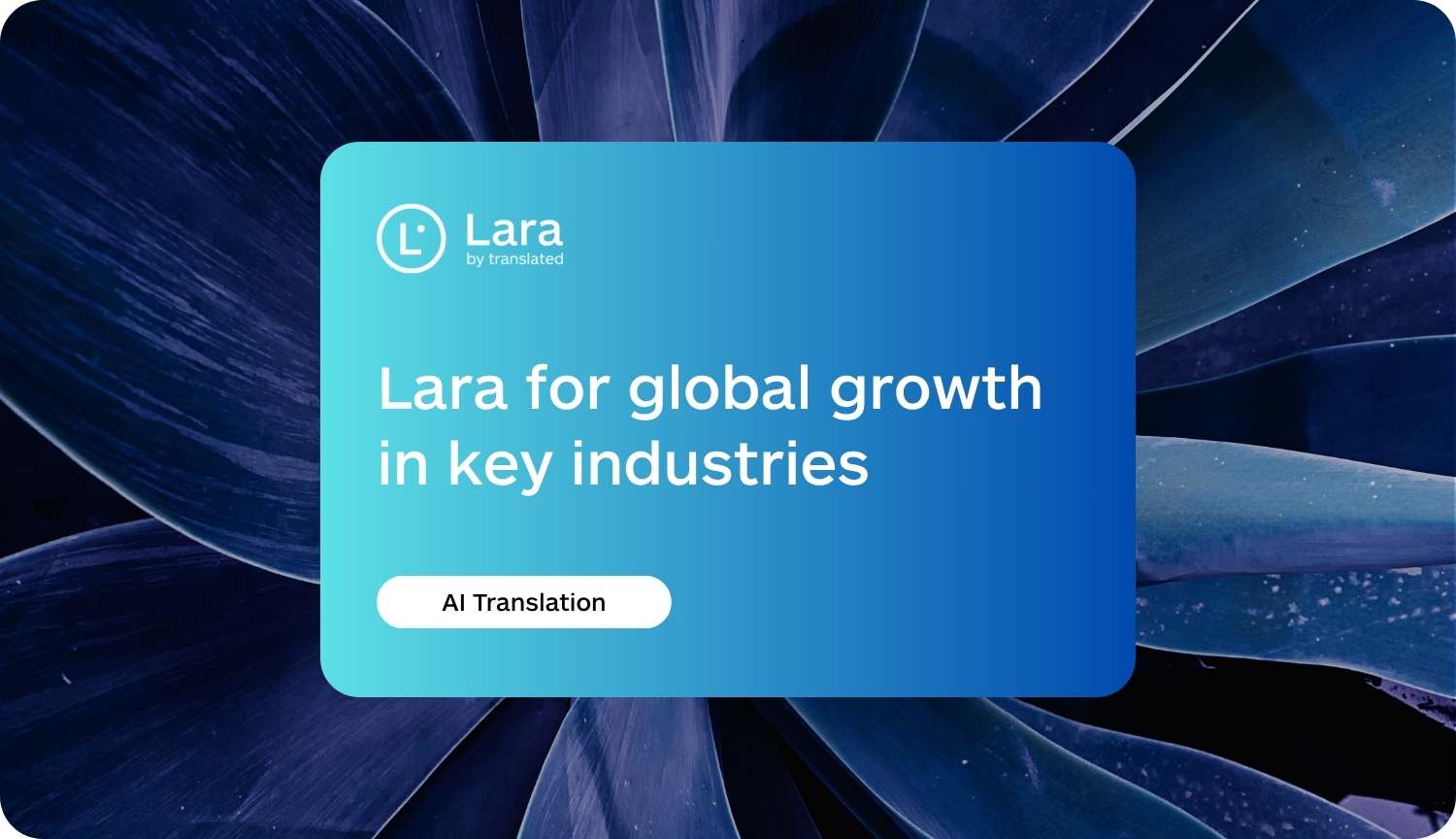It only takes one bad translation to turn a serious brand message into an internet joke and once it goes viral, there’s no going back.
Sure, translation fails can be funny (especially on restaurant menus), but for global businesses, they’re no laughing matter. A single mistake can confuse customers, hurt your brand’s image, or even land you in legal trouble.
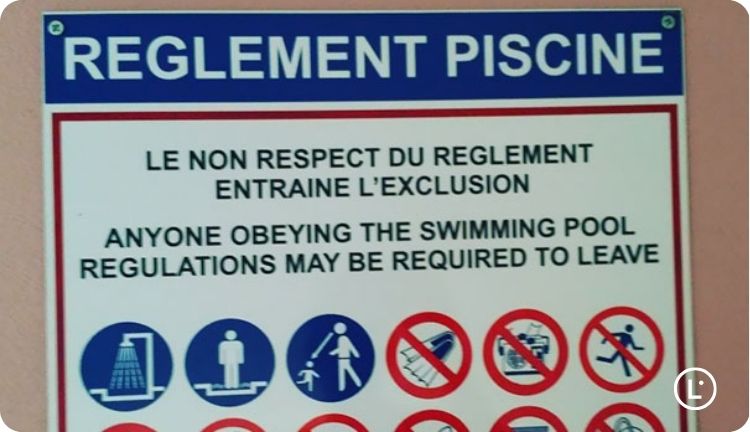
From small slip-ups to million-dollar marketing blunders, this article looks at what happens when translation goes wrong and how to avoid becoming the next headline.
When good intentions get lost in translation
The journey from one language to another is fraught with pitfalls that extend far beyond simple word-for-word conversion. Cultural context, idiomatic expressions, and linguistic nuances all play crucial roles in effective communication across language barriers.
When KFC first expanded into China in the 1980s, they translated their famous slogan “Finger-Lickin’ Good” with disastrous results. Instead of conveying the deliciousness of their chicken, the Chinese translation essentially invited customers to “Eat Your Fingers Off” — hardly the appetizing message the brand intended. While KFC eventually recovered from this mishap (and now boasts thousands of successful locations in China), this case highlights how easily language errors in branding can occur without proper cultural consideration.
Similarly, Pepsi’s refreshing invitation to “Come Alive with the Pepsi Generation” took a macabre turn when translated for the Chinese market. The slogan was interpreted as “Pepsi Brings Your Ancestors Back from the Dead” — a translation blooper in marketing that likely left potential customers more confused than thirsty.
The funniest translation errors from global brands
Some of the most memorable language fails that went viral come from well-established multinational companies that should have known better. Here are some notable examples:
- HSBC Bank: The banking giant had to spend approximately $10 million to correct a translation error after their tagline “Assume Nothing” was mistranslated in several countries as “Do Nothing” — hardly the message of proactive financial management they wanted to convey.
- Ford Motors: When introducing the Ford Pinto to Brazil, the company failed to realize that “pinto” is Brazilian slang for “tiny male genitals.” Not exactly the powerful automobile image they were aiming for.
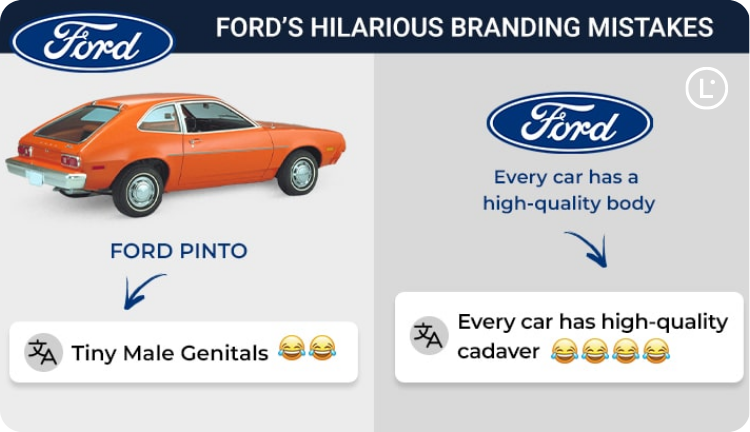
- Parker Pen: When expanding into Mexico, the pen manufacturer intended to advertise that their product “won’t leak in your pocket and embarrass you.” Unfortunately, the Spanish translation ended up promising that the pen “won’t leak in your pocket and make you pregnant” — confusing the Spanish word “embarazar” (to impregnate) with the English “embarrass.”
- Coors Beer: The American brewery’s slogan “Turn it loose” was translated into Spanish as “Suffer from diarrhea” — creating miscommunication through translation that certainly didn’t increase beer sales.
- Clairol: When the hair product company introduced a curling iron called “Mist Stick” to the German market, they were unaware that “mist” in German is slang for manure. Unsurprisingly, German consumers weren’t enthusiastic about a “Manure Stick” for their hair.
These real translation mistakes and lessons demonstrate how easily cross-cultural communication can go awry without proper localization strategies.
Beyond humor: When translation failures cause brand damage
While many translation failures and brand damage stories provide amusement, the business consequences can be severe. Poor translations can lead to:
- Revenue loss: Products may need to be pulled from shelves and repackaged, causing significant financial impact.
- Brand reputation damage: In today’s social media environment, translation blunders spread rapidly, potentially damaging brand perception in target markets.
- Legal issues: In some cases, particularly with instructional materials or safety warnings, mistranslations can lead to legal liability if they result in improper use or injury.
- Market entry delays: Correcting translation issues can delay product launches and give competitors an advantage.

Amazon experienced this when they launched in Sweden in 2020. Their automated translation system produced numerous embarrassing errors, including listing products with vulgar language and mistaking the Argentinian flag for the Swedish flag. What should have been a celebrated expansion became a public relations challenge that overshadowed their market entry.
How advanced technology can prevent translation disasters
Advanced AI translation technologies have revolutionized how businesses approach multilingual communication. Lara Translate utilizes state-of-the-art Model Context Protocol (MCP) technology to ensure translations maintain meaning and cultural appropriateness across languages. Unlike basic machine translation that relies solely on word-for-word conversion, Lara’s sophisticated neural networks understand context, idioms, and cultural nuances that often trigger international advertising mistakes.
For businesses expanding globally, using a specialized translation solution like Lara Translate significantly reduces the risk of embarrassing mistranslations. The technology can accurately process documents, website content, and marketing materials while preserving brand voice and cultural sensitivity. This technological advantage is particularly valuable when dealing with specialized terminology or creative marketing content where language humor and subtle messaging must be precisely conveyed.
How to avoid common translation mistakes
To prevent your business from joining the hall of fame for lost in translation examples, consider these essential strategies:

1. Invest in professional human translation services
While machine translation has advanced significantly, professional human translators bring cultural knowledge and contextual understanding that AI alone cannot match. This is particularly important for marketing materials, legal documents, and content with cultural references.
Human translators can spot potential issues with brand names, slogans, and cultural references that might not be obvious to someone unfamiliar with the target culture. They can also advise on whether your message will resonate with the local audience or require adaptation.
2. Implement proper localization (not just translation)
Effective international communication requires localization — adapting content to suit the specific cultural, linguistic, and technical requirements of your target market. This goes beyond direct translation to include:
- Adjusting imagery and colors to align with local cultural associations
- Adapting humor and references to local context
- Considering local regulations and standards
- Reformatting dates, numbers, addresses, and units of measurement
3. Use back-translation as a quality check
Back-translation involves taking your translated content and having a different translator convert it back to the original language. This helps identify potential misunderstandings or areas where meaning has been lost. If the back-translated version differs significantly from your original content, you may need to revisit the translation.
4. Conduct thorough testing with local audiences
Before launching translated content on a large scale, test it with members of your target audience. Their feedback can highlight issues that even professional translators might miss, especially regarding current slang, regional variations, or how your message is perceived in the local cultural context.
5. Develop comprehensive style guides and glossaries
Creating translation style guides and terminology glossaries ensures consistency across all your translated content. These resources help translators understand your brand voice, preferred terminology, and any industry-specific language they should use consistently.
Why these mistakes happen: Common pitfalls in translation

Understanding why translation bloopers in marketing occur can help businesses avoid similar mistakes. The most common pitfalls include:
Literal translation
Many translation errors result from direct word-for-word translation without considering context or cultural implications. Languages don’t map directly onto each other, and literal translations often produce nonsensical or unintentionally humorous results.
Cultural blindspots
Different cultures have unique taboos, values, and associations that can completely transform how a message is received. What’s perfectly acceptable in one culture might be offensive in another.
Reliance on non-professional translators
Using bilingual employees rather than professional translators, or relying solely on basic machine translation tools, increases the risk of errors. Professional translators understand not just the languages but also have translation-specific training.
Ignoring regional variations
Languages like Spanish, English, and Arabic have significant regional variations. A translation that works perfectly in Spain might confuse or offend audiences in Mexico or Argentina due to different vocabulary usage and cultural references.
Rushing the process
Translation quality suffers when deadlines are too tight. Proper translation requires time for research, translation, editing, proofreading, and quality assurance.
The path forward: Turning translation challenges into opportunities
While this article has highlighted numerous real translation mistakes and lessons, the goal isn’t to discourage international expansion but rather to emphasize the importance of thorough preparation. With proper planning and resources, businesses can avoid joining the ranks of translation fails and instead create meaningful connections with global audiences.
Companies that invest in quality translation and localization demonstrate respect for their international customers and gain a competitive advantage in new markets. In today’s global economy, effective communication across languages isn’t just about avoiding embarrassment—it’s an essential business strategy that drives growth, builds trust, and opens new revenue streams.
By learning from these cross-cultural marketing fails and implementing robust translation processes, your business can confidently expand into international markets without becoming the next viral translation disaster.
FAQ: Common questions about translation failures
What are the most common types of translation errors?
The most frequent translation errors include literal translations that ignore context, cultural misunderstandings, grammatical errors that change meaning, and terminology inconsistencies across different content pieces.
Can machine translation prevent all translation mistakes?
While advanced machine translation has improved dramatically, it cannot eliminate all potential errors, particularly those related to cultural context, humor, or highly specialized content. The most effective approach combines machine translation with human review and cultural adaptation.
How can I test the quality of translations before publishing?
Implement a quality assurance process that includes back-translation, review by native speakers from your target market, and comparative analysis against competitors’ content in the same language.
Are some industries more prone to translation errors?
Industries with specialized terminology (like legal, medical, and technical fields) face higher risks of translation errors. Additionally, marketing and advertising content is particularly vulnerable due to its reliance on cultural references, wordplay, and emotional resonance.
How should a company respond to a translation mistake?
When a translation error occurs, acknowledge it quickly, correct the error, and if appropriate, show how you’re improving your processes to prevent future mistakes. Some brands have successfully used humor to respond to minor translation fails, turning potential embarrassment into positive engagement.
This article is about:
- Famous translation fails that damaged global brands and became cautionary tales
- Real-world examples of marketing mistranslations from companies like KFC, Pepsi, and HSBC
- Strategic steps to avoid embarrassing translation mistakes and protect brand reputation
- How tools like Lara Translate can help ensure culturally accurate, fail-proof localization
